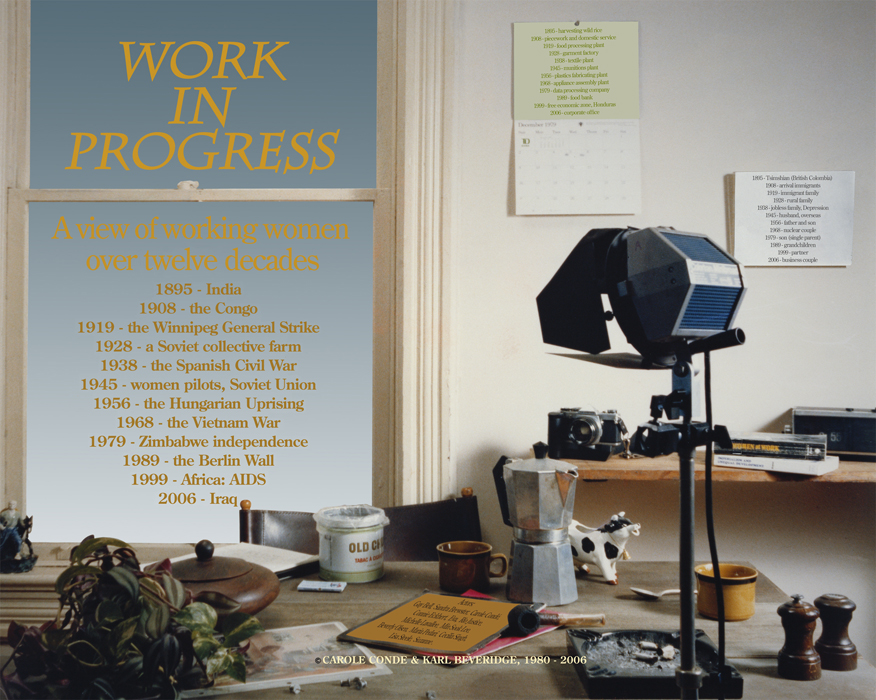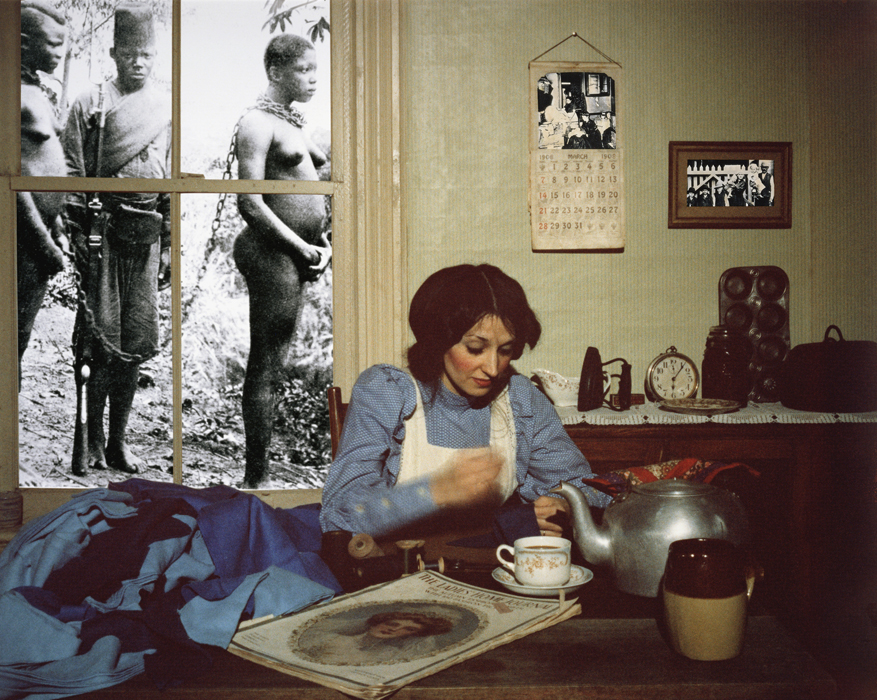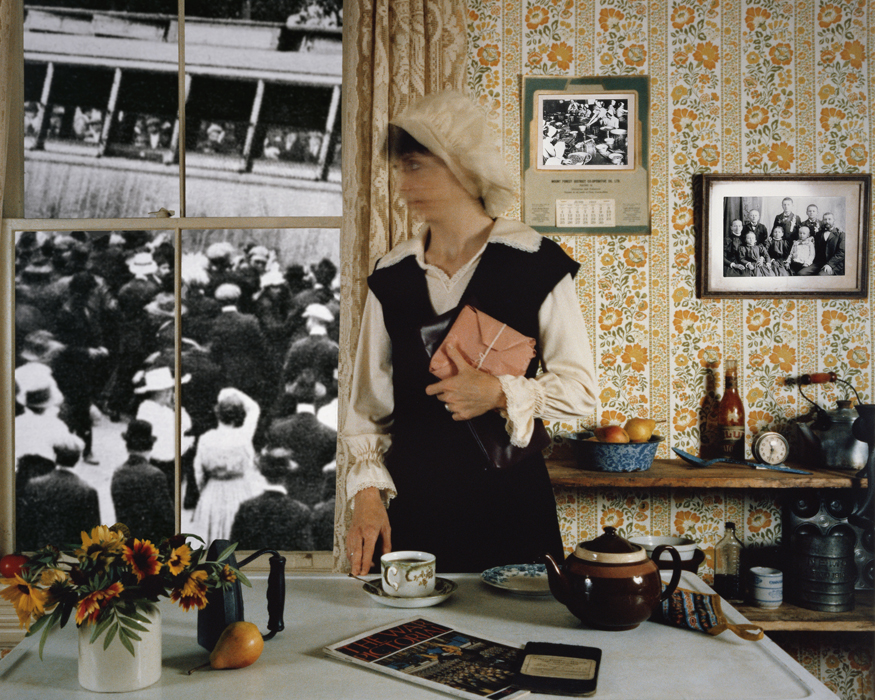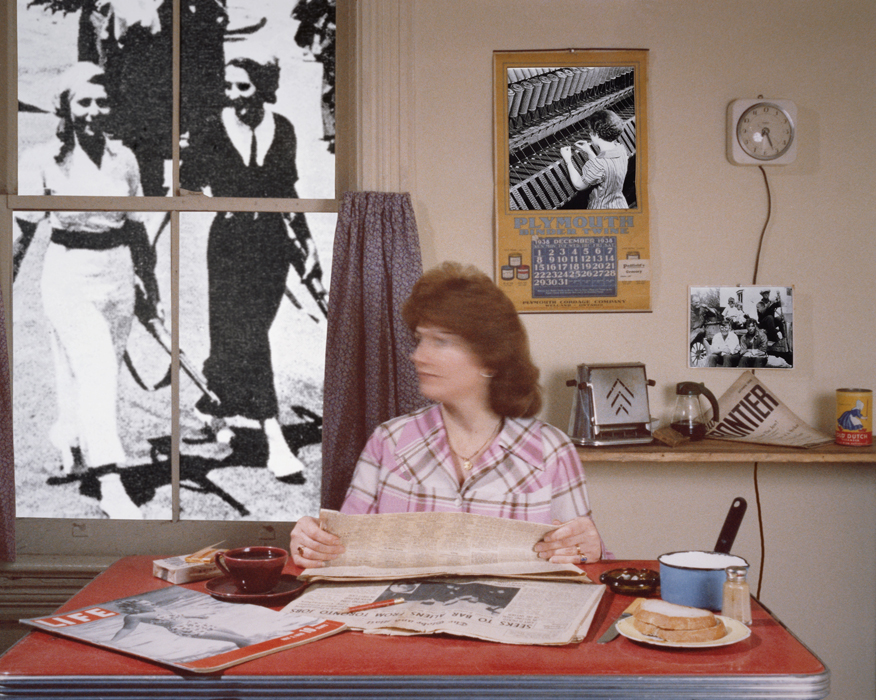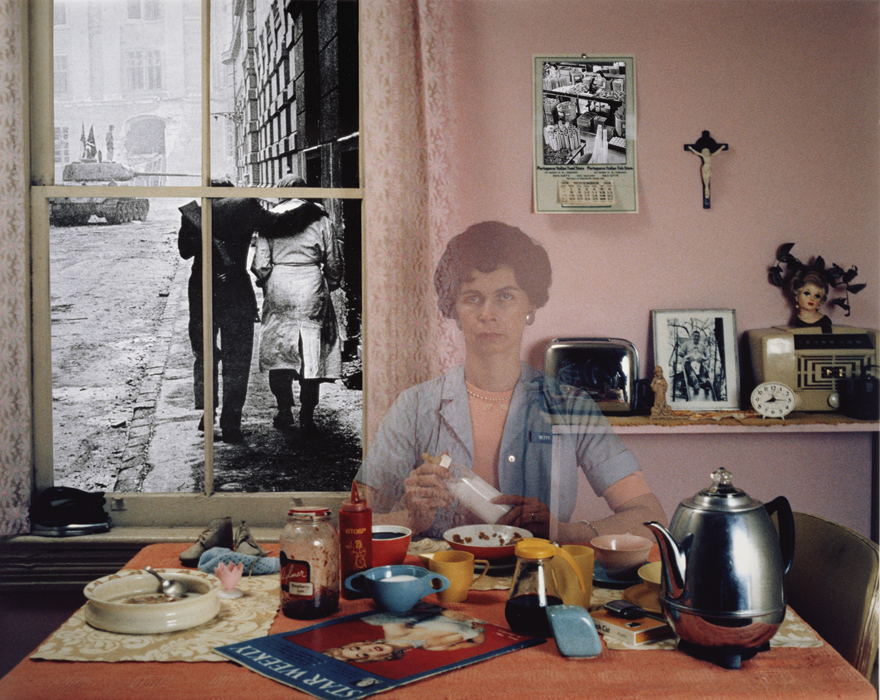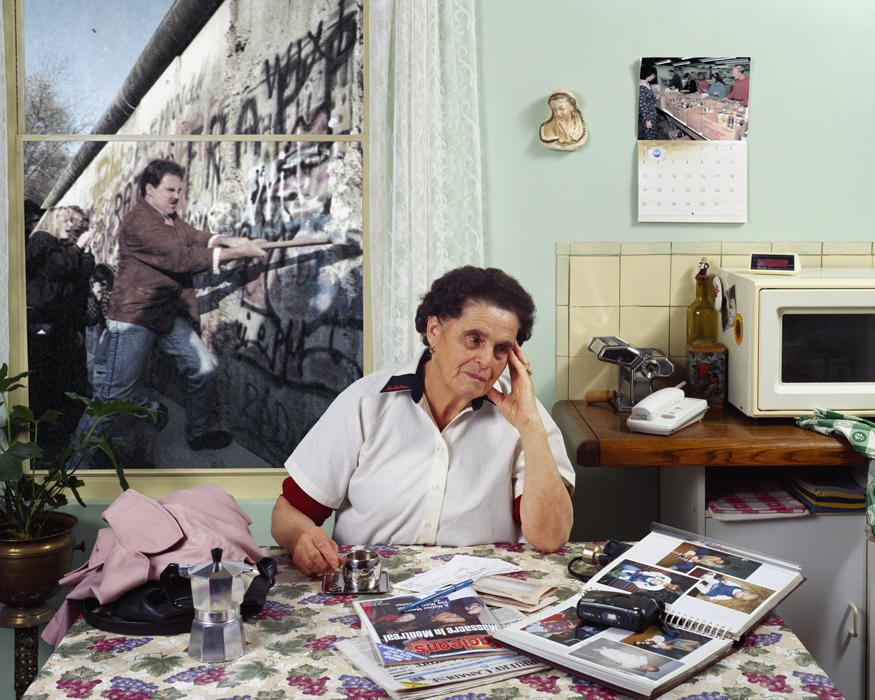Work in Progress (1980/2006) The original version of Work in Progress was started in late 1979 and completed in 1980. It portrayed working women over eight decades: from 1908 to 1979. Four new images were added in 2006 to bring the series up-to-date and to add a First Nation woman at the beginning. The kitchen setting reflects the double work-load and acts as a marker for the changing periods. It also tied together the issues of work and everyday life, a theme that runs through many of Condé and Beveridge’s projects.
Each woman is posed in relation to her outside job in a kitchen that contains appropriate period props. Each has a window framing a documentary photo that indicates the politics of the period, a calendar that shows the predominant type of women’s employment and a snapshot of a typical family structure at the time (from extended family to a single mom).
1895 portrays a First Nation woman preparing fruit for market with a documentary of a British woman in colonial India cut into the window. 1908 shows a woman doing piecework at home with the last remnants of the slave trade framed behind her. 1919 shows a woman about to go out the door to her factory job while she is, momentarily, distracted by the Winnipeg General Strike. 1928 portrays an office worker (possibly a telephone operator) and Soviet woman tractor drivers. An unemployed woman looks through the want ads in 1938, while women from the Spanish Civil War walk past her window. 1945 has a woman war worker and a documentary of Soviet women pilots. A woman service worker fades into the background with a baby bottle (women being pushed back into the home) while the 1956 Hungarian Uprising appears in the window. 1968 portrays a Quebecois woman and the Vietnam War. 1979 shows a South Asian women holding a photo of union activists while women celebrate the independence of Zimbabwe. A woman returns from work at a donut shop in 1989 while the Berlin wall comes down and a magazine on the table reports on the Montreal Massacre. 1999 shows a professional working woman and an African AIDS vigil. In 2006, a domestic worker takes care of a child in a wealthy home with the Iraq war pictured behind her.
The sets for each image were constructed in the artists’ studio. The props were collected at second-hand stores. The documentary images were cut into the photographic prints of the set and re-copied to produce a final 4” x 5” transparency from which the prints are made.

